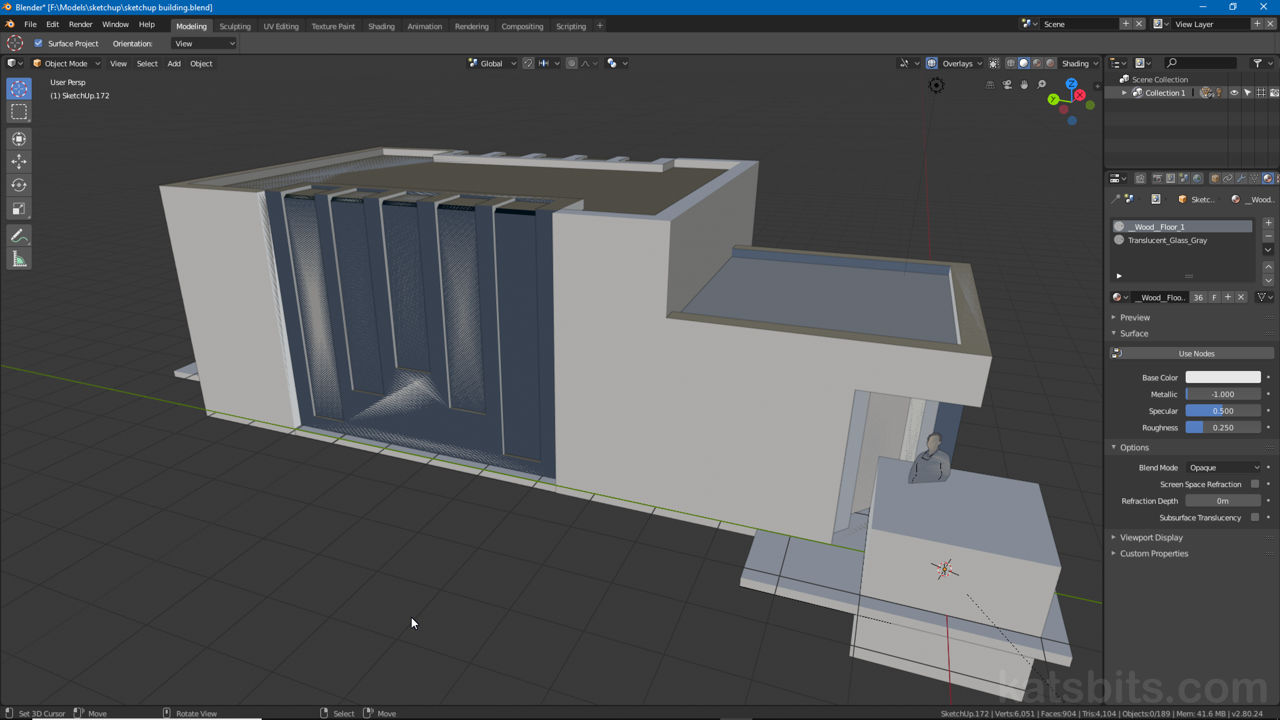Blender & SketchUp Import
Table of Contents
Important: whilst SketchUp Make is still available it is no longer actively supported or developed by Trimble. Users are instead directed to SketchUp Free, an online browser-based ‘app’ that has much the same functionality minus import/export capabilities (disabled), it cannot be used to export content out for use in Blender.
SketchUp Free is a browser based version of SketchUp Make with heavily limited export/import capabilities so cannot be used in conjunction with Blender 2.8+.
Summary
TL:DR summary of the export/import process explained below;
(1) Export SketchUp scene/selection to Collada DAE or KMZ.
(1a) if KMZ, extract DAE file and misc. contents.
(2) Import DAE file into Blender using Collada import.
(3) Tidy up mesh.
For extensive information and instruction on exporting and importing SketchUp meshes into Blender generally refer to Import SketchUp models into Blender, the process is the same with minor differences.
SketchUp export
Before exporting from any version of SketchUp ensure all meshes are set up as required, separated or grouped as needed, with materials and/or textures assigned. Once done, when exporting, if the Collada DAE format is not available KMZ can be used as an alternative (see instructions on unpacking these here). Set or select any options e.g. whether the mesh should be triangulated or not (useful for game-ready models), and then export. This produces a *.dae file (or *.kmz) and asset folder containing textures used by the model.
Design note: exporting to DAE/KMZ provides few options that help mitigate mesh complexity in Blender so some clean-up work will always tend to be necessary.
Limited options from (obsolete) SketchUp Make (top) and entirely locked export from SketchUp Free (bottom).

Once a model is prepped in SketchUp, export to DAE or KMZ (additional export options available with Shop and Pro).
Blender Import
To import the Collada DAE file, in Blender, from the File menu select Import then Collada (Default) (.dae) – File » Import » Collada (Default) (.dae). In the File Browser Browse select the *.dae file to be imported and in Import Properties (settings) to the right (N if not visible) set any import or mesh options then click the Import COLLADA button. If successful the imported SketchUp model will appear in the 3D View positioned as it was in SketchUp.
Important: although Materials and texture references are imported into Blender, the current Material and texture display system used by newer versions of Blender means additional work may be necessary so UV mapped and assigned images appear in the 3D View.

Depending on the format exported from SketchUp various import options are available for Blender, for example DAE, which provides a number of basic options to bring mesh and material data in for use.

SketchUp model after import into Blender – meshes may appear untextured even though Material data is imported.




